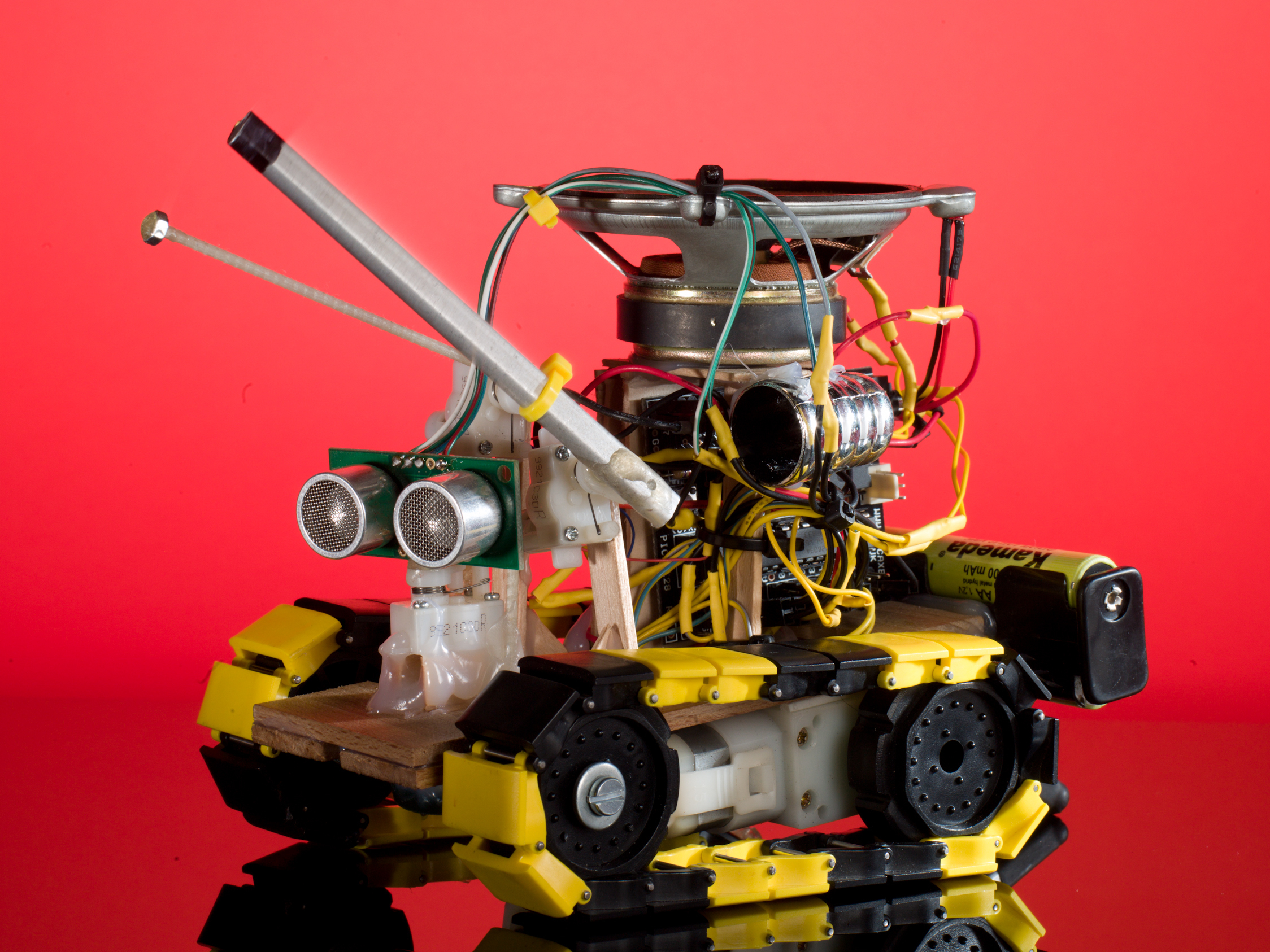You already cut off the sampler board’s battery clip and speaker, but it still has a microphone, an LED, and Record and Play buttons connected by wire pairs. Mount female headers on the black and red wires that connected to the battery clip, then plug red onto a +5V pin on the main board and black onto a Ground. Mount the larger speaker on top of the robot, pointing up, and solder the 2 sampler board speaker wires to it.
Insert batteries in your robot and test that the Record and Play buttons still work. Cut the Play wires close to the button and touch one of them to Ground on the main board. Does it play back? If so, this is the wire you’ll need, and you can trim off the other one close to the board. If not, try the other. (With some samplers, you’ll remove the Play button, test its pads on the circuit board, then solder a wire to the pad that works when connected to Ground.) Do the same with the Record button — find the wire that works when touched to Ground, and cut the other one away.
Mount female headers to both wires, then connect the Record wire to I2 on the main board and the Play wire to I3.
Mount the microphone and LED somewhere nice and visible. Now’s the time to be creative with extra little decorative parts. (I found a shiny plastic ring that works well holding the microphone.) To tidy up, use cable ties and hot glue, and you can also shorten wire lengths.



